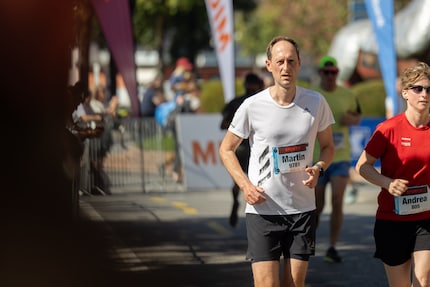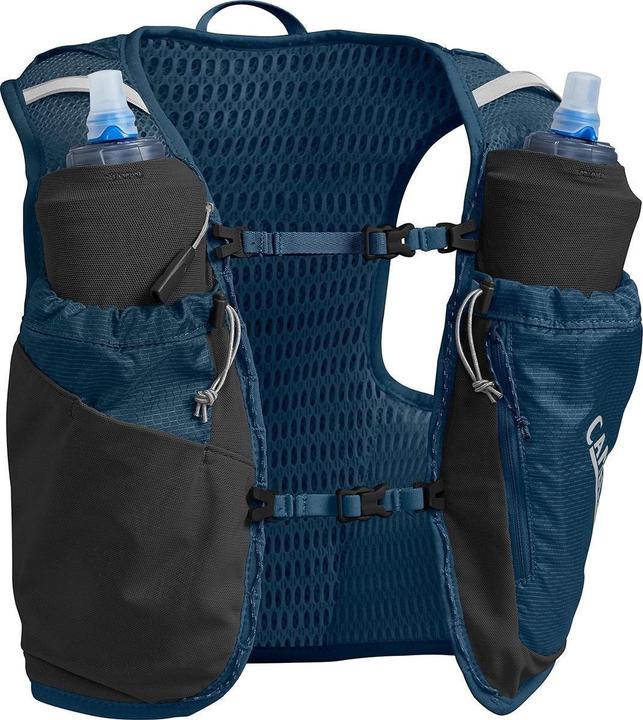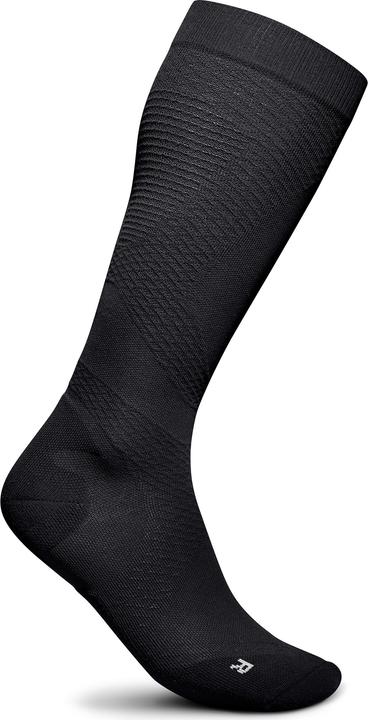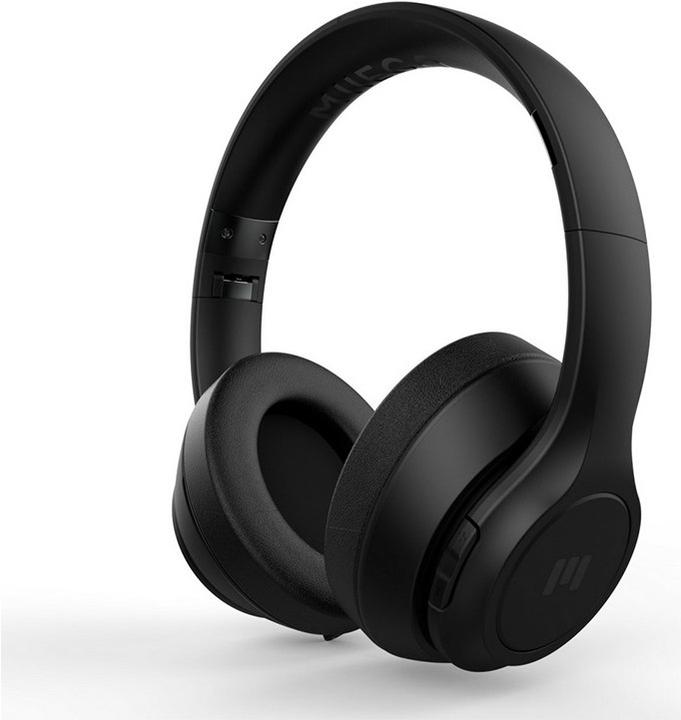

11 types of people you’ll meet at running events
Fun run season has begun. Thousands are lacing up their jogging shoes between Lake Constance and Lake Geneva, hoping for good placings – sometimes with very unique tactics and individual running and clothing styles.
First off, this article isn’t intended to discriminate or generalise – and certainly not to judge. I’ve personally observed everything I write here across various fun runs and leisure runs. Any minor exaggerations are deliberate, and similarities with real people are firstly purely coincidental and secondly attributable to these people themselves.
(Nowadays you have to put a disclaimer up so that there’s no shitstorm – humour is very personal and always in the eye of the beholder.)
1. The locomotive
After kilometre two at the latest, you’ll know whether you have a locomotive type runner in your group. The loud exhalation with every step is a trademark – well-known Spanish tennis players would be green with envy. Funnily enough, it’s almost always a man. Looks like he wants everyone around him to know that a) he’s making an effort and b) he’s internalised his running coach’s breathing technique tips, consistently taking them to heart from the first step to the last. Favourite training gadget:

2. The sole destroyer
My prediction? This person will need new running shoes after almost every half marathon. The running style of a sole destroyer is characterised by them slamming their foot into the ground with every step. Motion energy is radically and consistently converted into friction. The advantage for all fellow runners? This type of runner, similar to the locomotive, can be heard from afar thanks to their thunderous running style.
3. The sprinter
They do exist, people who feel like Usain Bolt, who think that every stretch is a sprint, overtaking the field from the start at the right pace. They don’t care whether they have to run across a meadow to overtake or create a clear lane for themselves through the field of runners by shouting, «Watch out!», a kind of verbalised high-beam flash. But don’t worry: you’ll almost certainly see this type of sprinter a second time in a race, usually during the last third of the run. If they’re not simply sitting on the side, completely exhausted, they’ll at best be walking towards the finish line (unless they belong to type 5 below).
4. The running obstacle
When ambition meets a lack of stamina, running obstacles are the result. This type of runner often tackles a route too quickly (not to be confused with the sprinter) and falls into a performance slump halfway through at the latest. The result? Those who can keep up their pace overtake the ambitious ones. They’re offended by this, mutating into an obstacle and making it difficult for fellow runners to overtake. Popular methods include swinging out their arms or unpredictable criss-crossing. There’s only one solution here: wait for a passage that allows you to overtake safely.
4.b The running obstacle 2
A subspecies of the fellow above, mainly pops up in longer races with a very large field of participants. The ones where you can register with a starting group according to your expected running time. The runner who mercilessly overestimates himself (yes, good old men are disproportionately affected here too) aims for an almost unattainable half marathon time of 1:45 hours, for example. After all, he still has four months of training ahead of him when he registers. In the end, he «only» runs a 2:15 time and stands in the way of all the faster runners who start behind him for 21.1 kilometres.

5. The chatterboxes
Wow, what a wonderfully fun run! At last, some time to have a quiet chat with your best runner friend. You don’t always have to sit in a café or meet up for a beer, a 10-kilometre run or half marathon works just as well. After all, people always say you should be able to have a conversation during a good workout, right? There’s nothing wrong with that per se, but chattering duos almost inevitably resemble type 4, albeit unintentionally.
6. The faux-modest fibber
Here, we’re dealing with the opposite of type 2, the running obstacle. This runner intentionally registers for a start group whose time is too slow for their actual running ability. They get an ego boost during the run by consistently going faster than at least two groups that have started in front of him, meandering past everyone practically for the whole race. As they cross the finish line, the faux-modest finisher grins into the finish line camera with a still dynamic, springy stride and double victory sign, enjoying the sight of their competitors dragging themselves to the end with their last ounce of strength.

7. The cut-off runner
They’re easy to recognise by the overears. By wearing headphones, they set things straight from the start: «I may be here, but I’m still in my own world.» Isolated from the outside thanks to noise cancelling, they have no interest in small talk before, during or after the race – they’re focused, ready, locked in. All their attention is focused on the music, which perhaps even defines the rhythm of their run. Or are they listening to a motivational coach? When choosing overears, this type of runner should make sure that the sweat-inducing ear pads are breathable and washable if necessary.
8. The motivator
Bascially the opposite of runners who isolate themselves from the outside world. The motivator isn’t just there, but right in the middle of everything. When smaller spectators hold out their hands, the motivator gives them a crisp high five. If there’s Guggenmusik (traditional Swiss music) playing, they practically dance towards them, applauding gratefully as they jog past. Sure, it may cost a few seconds, but that’s not what the motivator is about. For them, it’s more important that everyone has fun on the run. If a participant who’s struggling to drag themselves towards the finish comes into view, the motivator speaks a few words of encouragement as they overtake, even running a little slower to pull the sufferer along. They might even offer a bite out of their energy bar. They neither notice nor realise that their exaggerated good mood could go down rather badly with other participants, namely sprinters on the last kilometres, the running obstacles (type a and b) or anyone running on fumes.
9. The prepper
They look like they’ve taken the equipment from their Himalayan trail running crossing directly to the fun run on Lake Pfäffikon. A vest with several pockets, stuffed with gels, bars and a water bottle. Plus an anti-sweat headband and ultra-lightweight running goggles. Don’t forget the knee-high compression stockings. The fact that they don’t have an equipment belt with a headlamp, trail running poles and a windbreaker tied around their waist is nothing short of a minor miracle, even on a purely asphalt route with no elevation gain during midsummer.


Dynafit FLASK 350ML
0.35 l

10. The body function monitor
To them, the smartwatch can’t be powerful enough. Information on kilometres covered and pace is for beginners. The possibilities of technology need to be fully utilised. These tech fans use smartwatches that provide live data on vertical oscillation, average stride length, state of exhaustion and residual energy to the latest sports headphones while they’re running. Of course, the data collector runs with a heart rate belt around their chest and an extra pedometer on their shoes – even with the best sports watch, better to be safe than sorry. This season, their basic equipment now also includes a Smart Ring.
11. The low-battery runner
I’m always surprised at how many people have run a half marathon. Even people I wouldn’t have thought could do it, as their basic fitness level doesn’t really show. These people – again, mostly men – are often persuaded to take part in a running event («Half marathon? Piece of cake!»). Length of the route: doesn’t matter. They will make it to the finish line, not because they’ve trained well or a lot, but with pure willpower (respect!). And often enough, they’ve got to dig as deep as it goes. Days later, they still can’t climb stairs in the office, but are proud as punch.
So, find yourself here? Or recognised a friend? Do you know any other types of runners I’ve forgotten? Let me and the Community know in a comment. P.S.: I’m most likely the ageing, lagging behind type – just in case anyone was wondering.
Journalist since 1997. Stopovers in Franconia (or the Franken region), Lake Constance, Obwalden, Nidwalden and Zurich. Father since 2014. Expert in editorial organisation and motivation. Focus on sustainability, home office tools, beautiful things for the home, creative toys and sports equipment.
This is a subjective opinion of the editorial team. It doesn't necessarily reflect the position of the company.
Show all






